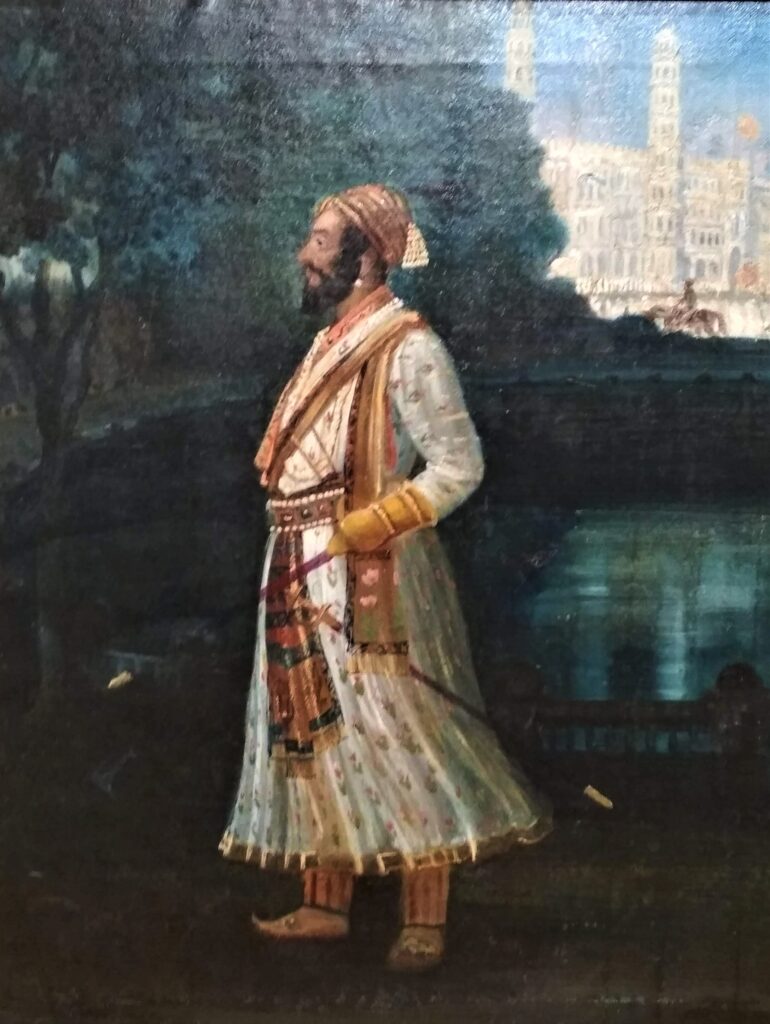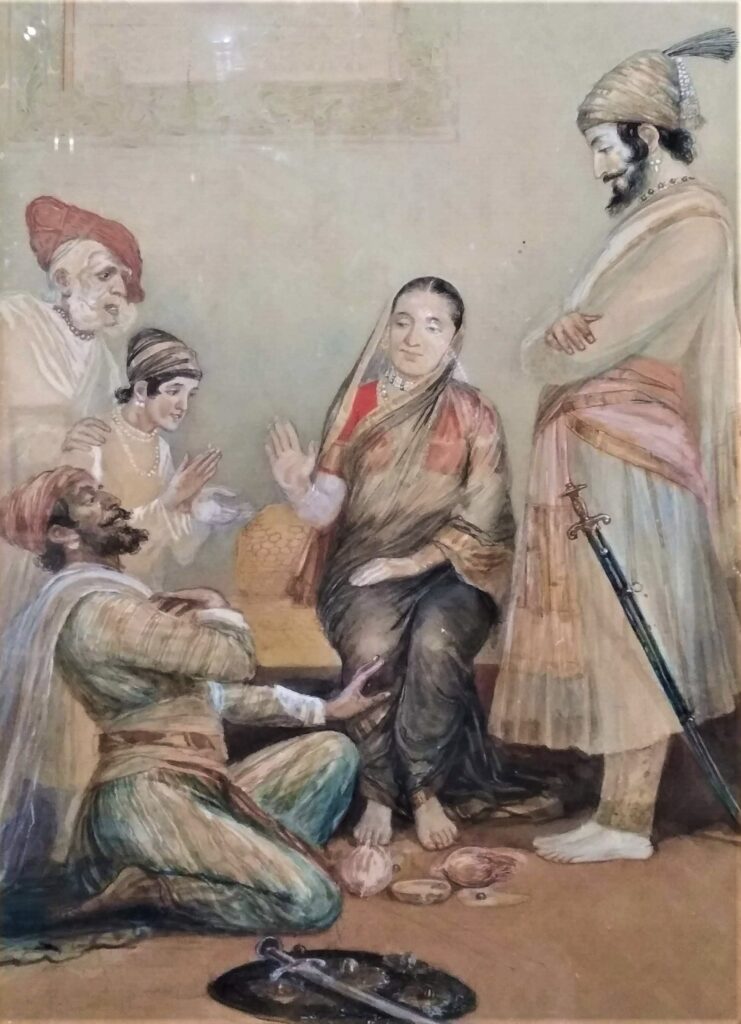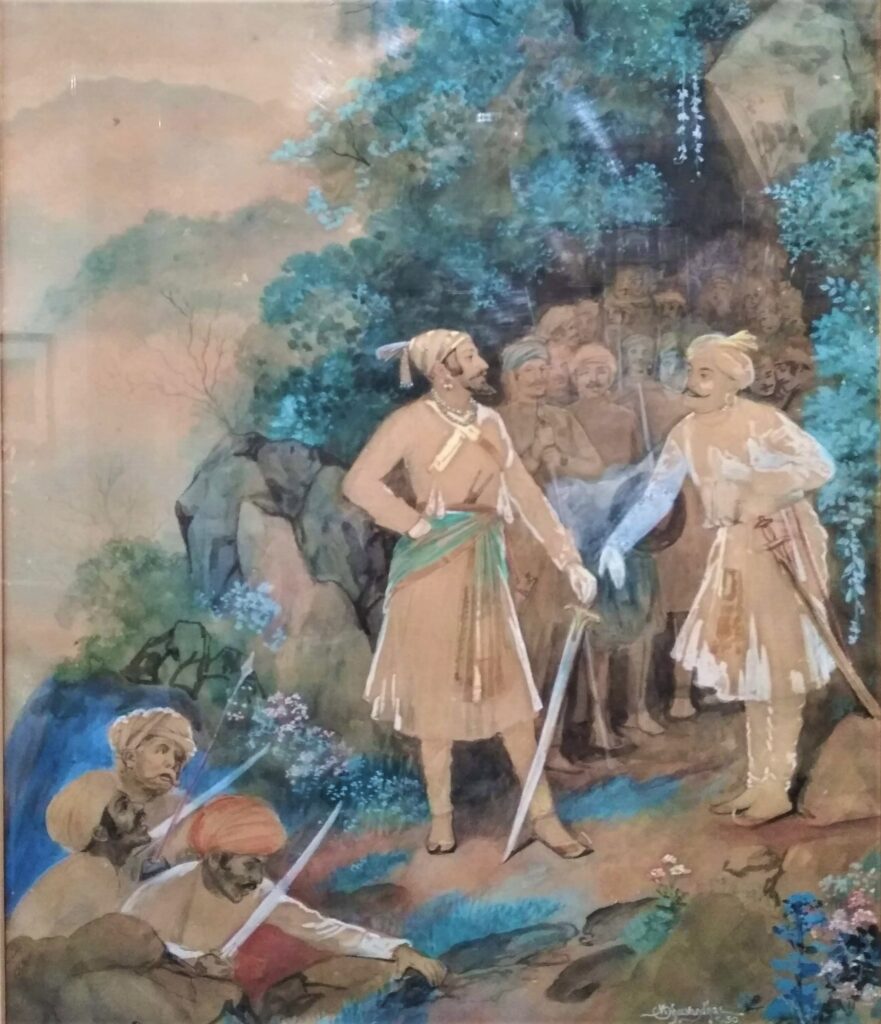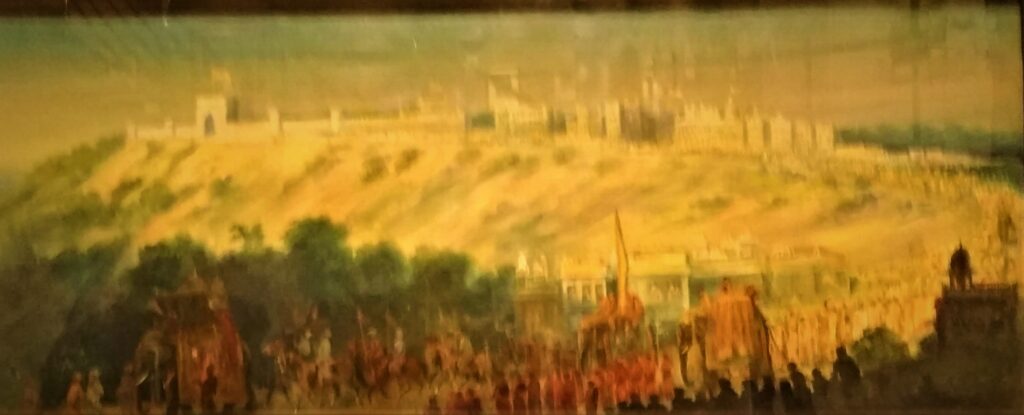Having grown up in Maharashtra, the story of Shivaji is more than familiar to me.
I heard about it. Read about it. Studied about it. Visited his forts. Identified nearly every second monument by his name.
Shivaji was and remains deeply entrenched in the consciousness of Maharashtra and her people. And yet, I must admit, the story of Shivaji and his exploits never fails to enthrall me.

Looking Beyond Bollywood
Last month saw the release of the Bollywood film Tanhaji (Pl note his actual name was Tanaji not Tanhaji) based on Tanjaji Malusare, one of Shivaji’s closest friends and aides.
I am no fan of Bollywood’s adaptations of historical subjects. I must admit, I haven’t seen Tanhaji – and honestly, I don’t intend to.
Bollywood has left a bad taste in my mouth as regards History and I do not wish to revisit that bitter taste.
And if like me, you wish to look beyond Bollywood to give your children an artsy taste to history, let me take you into the world of M.V. Dhurandhar, one of India’s most famous painters.
Dhurandhar was one of the leading artists and painters of the last century and left a great impression by his unique work. One of his favourite subjects was Shivaji.
Stop-motion Drama

This painting captures one of the most dramatic moments of Shivaji’s life
This episode of Shivaji’s life is surely one of the most dramatic – and makes for a great story. Dhurandhar rightly picks it up. This is the moment when Shivaji was invited by Aurangzeb to Agra and then insulted in his court.
In the painting, notice the pride and dignity in Shivaji’s stance. The slight shock on the face of Aurangzeb.
The painter tells a story through the faces of not just the two principal characters, Shivaji and Aurangzeb, but also through the body language and expressions of the others. The courtiers, the guards, little Shambhaji, the others – they are all in shock at the audacity of Shivaji to speak in the Emperor’s presence.
Although Aurangzeb is the mighty Mughal Emperor here – he is pushed to one end of the picture and it is Shivaji who occupies centre stage and it is Shivaji who dominates the narrative.
Powerful story telling through one snapshot moment.
When I visited the Deewan-e-Khas at the Agra Fort, it was this scene that played out in my mind. And my children were captivated by the story. (Make Fort visits more interesting for Children by telling them stories – Click here to read more about the stories you can tell your kids at Agra Fort.)
Power and Punch

Here is another painting from Dhurandhar’s Shivaji collection – a snapshot from the life and legend of Shivaji. Blessed by divine forces, the story of Shivaji acquires a hagiographical halo here. Shivaji’s famous sword – the Bhavani – is given a divine essence – captured by this painting.
Story in Stillness

This painting is one of my personal favourites. It’s almost as if you can hear the characters breathing and speaking. Seen in this picture are Shivaji along with Jeejabai, his mother , Shambhahi his son and Tanjaji Malusare, his dearest friend.
Tanaji was a childhood friend of Shivaji’s and a general in his Army. The story here goes back to 1665 when as a part of the Treaty with the Mughals, the fort of Kondhana is given to the Mughals along with some other forts.
Shivaji is disappointed about losing such a strategically important fortification. His face, his body language depict that so aptly. His mother Jeejabai is also sad but hopeful upon hearing the promise of Tanaji. Evident in Tanaji’s body language and posture is his promise – being gung-ho and optimistic about setting things right.
Jeejabai’s blessings give the story a positive end.
A picture can indeed speak a thousand words.
Capturing Great Drama

Dhurandhar’s paintings very often capture the various momentous occasions of Shivaji’s life.
In this one, Shivaji is seen during his imprisonment in the Panhala Fort in 1660 – after being captured by the combined forces of the Mughals and the Adil Shahis.
Baji Prabhu and a small group of Shivaji’s followers seen in this painting gave up their life to help Shivaji escape. This painting captures that story.
This painting also speaks to us about Shivaji’s ardent followers who were fiercely loyal and ready to lay down their own lives for him.
Some More Snapshots

The mighty warrior bows with humility and respect before his spiritual guru in this one. This painting not only records a historical event but also tells us a lot about Shivaji’s nature and character.
Ramdas Swami was known to be Shivaji’s guide and guru. It is said that at one point, Shivaji was so moved by Ramdas Swami’s spiritual way of life that he wished to leave everything and follow him. Ramdas Swami dissuaded him, insisting that Shivaji focus on his greater role of Swarajya.

This picture by Dhurandhar – the Coronation of Shivaji – captures yet another crucial occasion in the life of Shivaji and in the History of Maharashtra.
The attention to detail – faces, clothes, expressions, headgear, jewelry etc of not just the main players but also the minor characters is what makes Dhurandhar’s work so fabulous.

As you can see, Art can become an interesting entry point to introduce children to History. For History need not be told in a dry-as-bone chronological narrative. It can be introduced through snapshots like these – paving the way for a more interesting and meaningful look of the past.
So if, like me, you wish to use Art as a medium of explaining History to your children, and would like that their view of History is not coloured by the jingoistic tamasha style of Bollywood, exploring this chain is surely one for you.
And finally, the artist whose paintings (not restricted to Shivaji) remain an endearing legacy of our past.

